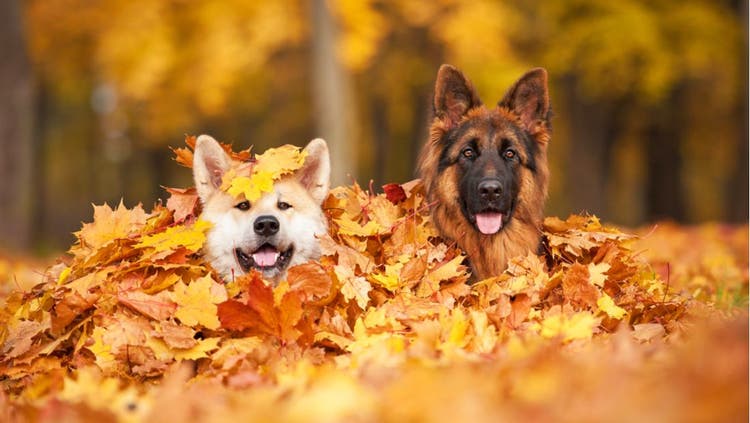
Autumnal Toxins for Pets
As the leaves begin to fall and a chill infiltrates the formerly warm summer breeze, you and your pet will be primed for Fall fun, but need to be aware of the potential hazards. We all may be familiar with the common threats this new season poses to our pets, like chocolate toxicity from the spoils of Halloween and corn cob foreign body obstructions. However, there are some toxins that we might not know about, many of which are right in our front yards!
Fall Flowers to Avoid
What is everyone’s favorite fall flower? That’s right, the mums! Formally known as Chrysanthemums, and coming in a variety of fall colors (orange, red, and yellow), these plants adorn porches in preparation for the new season.
Unfortunately, these seasonal favorites pose a potentially toxic threat to your pets. Chrysanthemums contain pyrethrins, which are the same active ingredient used in many canine flea and tick preventatives. Although much less of a concern for dogs, if your cat ingests any part of the chrysanthemum plant, they may suffer from bouts of vomiting, diarrhea, and inappetence. Cases of larger amounts of ingestion even show neurologic signs, such as ataxia and incoordination. Cats are especially sensitive to pyrethroid toxicity and, though we know not to put flea and tick preventative medication for dogs on our cats, we may be unaware that our beloved “mums” contain that same harmful ingredient (albeit in a much smaller concentration).
Malignant Mushrooms
A much more sinister toxin that can affect your pet at any time of year, but tends to bloom in the damp fall months, is the mushroom. Less than 100 species of mushrooms in North America are toxic, but unless you are a botanist, you may have difficulty discerning which ones in your backyard are poisonous.
The most toxic mushrooms contain amanitin toxins. After ingestion, these mushrooms will cause common gastrointestinal side effects, like vomiting and diarrhea. Then, however, dogs will appear to be fine after the GI signs resolve. This is known as a period of “false recovery.” Amantins are hepatotoxic and can cause fulminant liver failure in 36-48 hours after exposure. This can lead to the development of coagulopathy, encephalopathy, and, in serious cases, even death. The best defense against mushroom toxicity is vigilant monitoring of your yard and removal of any and all mushrooms. If you live in an area where mushroom poisoning is even a possibility, and your dog is having GI signs, it is best to get them checked out immediately. Delaying of treatment worsens your pet’s prognosis greatly.
From the beautiful mums to the treacherous mushrooms, autumn poses its own lineup of toxic threats. So, enjoy fall’s charm, but if your cat or dog starts having vomiting or diarrhea, do not hesitate to contact your veterinarian. While the toxins of fall range from mild and self-limiting, some are life-threatening and you can never be too careful.